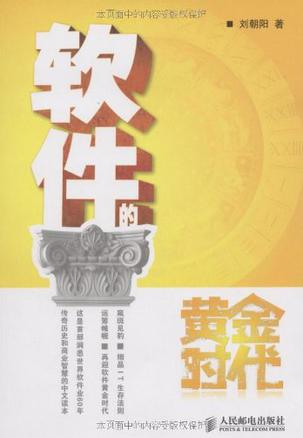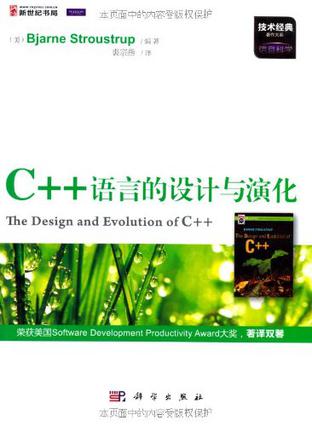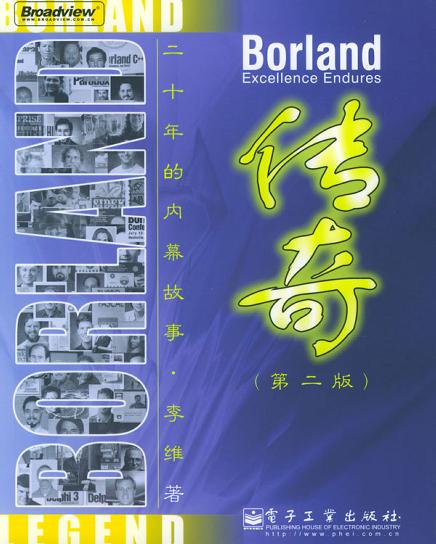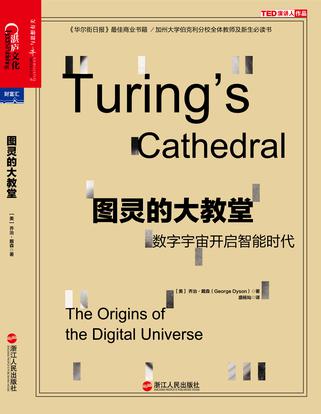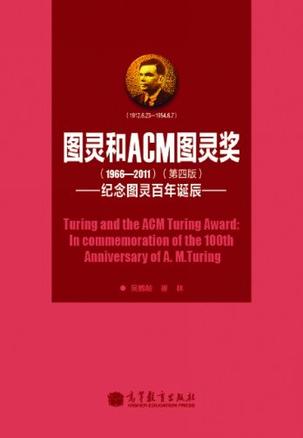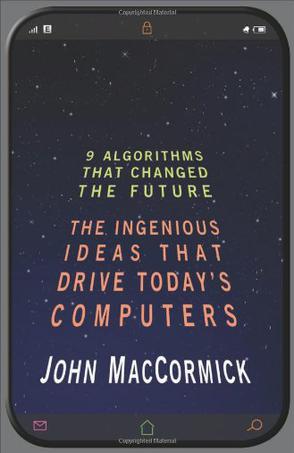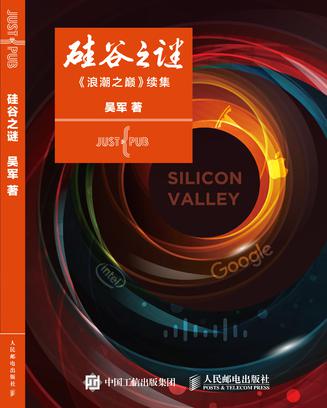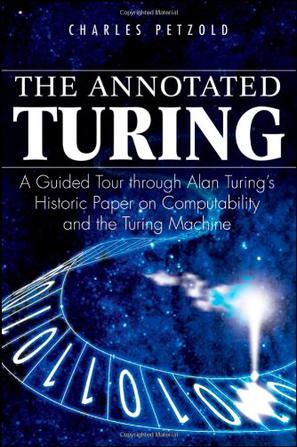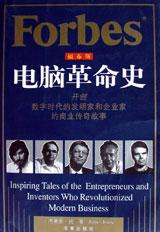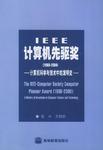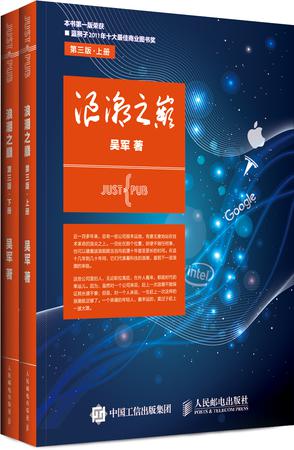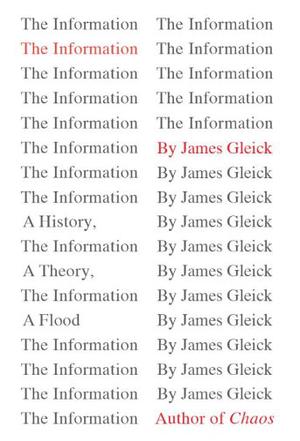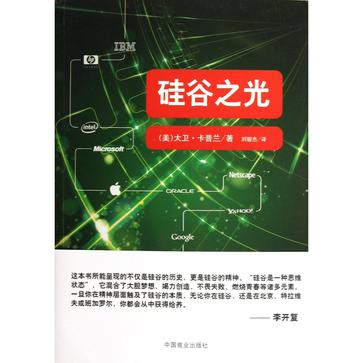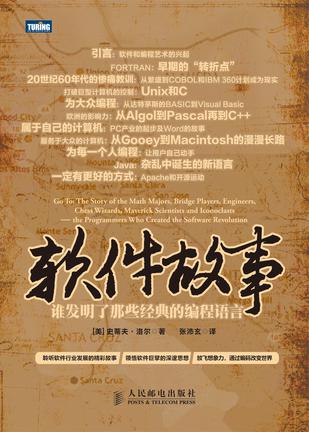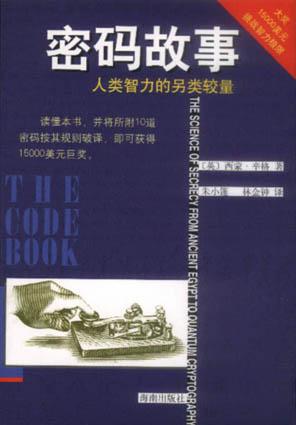欢迎来到相识电子书!
标签:计算机
-
计算机:一部历史
《计算机:一部历史》,给大众读者写的计算机科普读物,零门槛入门计算机科学。讲述计算机背后鲜为人知的故事,普及关于计算机和互联网,你不得不了解的知识。在过去数十年里,除非你一直与世隔绝,否则就不可能不受到信息革命的影响。我们身处技术演进史上的计算机时代,无论你是计算机和互联网的拥护者、反对者还是旁观者,无论你是否具备计算机专业背景,只要你使用计算机,这本书就是你的案头必备。 -
PC迷幻紀事
那是一個不羈的年代:一個充滿示威抗議、迷幻藥實驗、反傳統社群,和無政府理想主義的時代。一九六○年代,美國社會歷經大幅動盪起伏,撕裂了五○年代的中產階級安逸表象。從民權運動、迷幻藥、女權問題、生態意識,到反戰運動,在在促成反正統價值以及反主流文化觀念的形成。那也是一個奔騰的年代:今日你我司空慣見的電腦技術,其原始概念即成形於此。在這不到二十年的時間裡,美國西岸區區幾平方英哩範圍內政治、文化,與科技潮流交會時的激盪與衝擊,催生出一個不平凡的概念──個人電腦,也就是一個人完全掌控一臺電腦,並藉由電腦拓展與傳達思維的創見。科幻小說作家威廉?吉布森(William Gibson)曾說:「未來已然降臨,只是還未普及。」此一觀察正可貼切描述本書開創全新局面的小社群,它就像十五世紀義大利的佛羅倫斯,地處邊陲一隅,卻在五百年前開創了文藝復興運動,進而憾動全世界。 -
软件的黄金时代
《软件的黄金时代》描述了软件行业技术、市场、产业、商业价值、关键事件、人物事迹的历史运行轨迹,以及软件已经改变的和将要改变的人类生活与商业创新之间的逻辑分析和价值判断。在内容上,《软件的黄金时代》涉及了软件历史的几乎所有重要技术:程序语言、操作系统、数据库、中间件、应用软件和开源软件、人工智能、软件工程、网络安全、Web2.0、移动互联网、企业管理、个人数据处理等,并在横向话题分类中进行灵活组合。在构架上,以史鉴今,糅合话题式和模块式的内容编排,迎合当今读者多元化的阅读取向,使不同身份的读者都能够轻松找到兴趣点和舒适的阅读方式。在风格上,《软件的黄金时代》通俗、活泼、充满矛盾和尖锐的思想火花;书中挖掘了足够多的新闻历史事件的背景关联和更多重量级人物的对话和思想碰撞,内容具备足够的思想张力和启迪性,与当今IT业的热点话题和趋势息息相关,使得各行各业的非技术背景读者也能从软件的技术史和商业史汲取养分。 -
C++语言的设计与演化
《C++语言的设计与演化》是C++的设计者关于C++语言的最主要著作之一。作者综合性地论述了C++的发展历史,C++中各种重要机制的本质意义和设计背景,这些机制的基本用途和使用方法,讨论了C++所适合的应用领域及其未来的发展前景。全书共18章,分两大部分,其中第1部分(第1~9章)分别介绍了C++的史前时代、C with Classes、C++的诞生、C++语言设计规则、1985—1993年表、标准化、关注和使用、库、展望;第2部分(第10~18章)分别介绍了存储管理、重载、多重继承、类概念的精练、强制转换、模板、异常处理、名称空间、C语言预处理器。为便于查找与学习,全书最后附有专业术语索引。《C++语言的设计与演化》在帮助人们理解C++语言方面的作用是不可替代的。 书面向每个学习和关注C++语言的专业工作者、科研人员、教师及学生。 -
Borland传奇
《Borland传奇》第一版问世的时候,因时间仓促,难免存在出版上的瑕疵,现在再版得以弥补,加上李维先生又增补了不少内容,特别是对下一阶段IT技术的发展给出了前瞻性的分析。相信新版的《Borland传奇》将带给大家更多的阅读快乐。 Borland公司是中国程序员最为景仰的公司之一,他们非常熟悉和热爱Borland的各种产品,但对该公司的情况知之甚少。其实Borland公司拥有十分杰出的技术大师,超群的技术产品。其企业发展也是跌宕起伏,有着十分精彩的故事。 本书披露了Borland公司各个重要产品开发中鲜为人知的内幕故事,第一次让读者了解了Borland公司顶尖技术天才的风采,并展示了在美国软件技术市场上波澜壮阔、激动人心的技术大战和产品大战,而且从资深技术人员的角度阐述了作者对于软件技术发展各阶段的深刻理解和对未来软件的发展趋势的思考。对于技术人员,对于管理人员,借鉴研究Borland公司的发展历程都是十分有意义的。 读这本书有点像读《三国演义》,当前在世界IT领域内,可谓群雄并起,硝烟弥漫。IBM、Microsoft、Borland……之间斗智斗勇,攻城略地,此起彼伏,互有胜负。他们之间的争斗历程真是惊心动魄,威武雄壮,读起来不仅故事精彩纷呈,引人入胜,从中也可以领略业界高人的文韬武略,攻守计谋。阅读它不仅可以愉悦身心,也可以增长智慧,对从事IT事业的人们更有指点人生的参考价值。 -
图灵的大教堂
1936年,时年24岁的图灵宣称:“发明一台可用于计算任意可计算序列的单一机器是有可能的。”在《图灵的大教堂》一书中,作者乔治•戴森着重介绍了一小群人,为首的是供职于新泽西州普林斯顿高等研究院的约翰•冯•诺依曼,他参与建造了最早的一台计算机,以实现艾伦•图 灵提出的通用机的愿景。他们的工作打破了用于表意的数字和用于运算的数字之间的区别,世界因此而改变。 科学家们使用5千字节的内存(相当于现代计算机桌面上显示的光标所分配的内存大小),在天气预测和核武器设计方面,都获得了前所未有的成功。同时,他们还利用空闲时间解决各种问题——从病毒的进化到恒星的演变。 戴森教授的叙述既具有历史意义,又富于预见性,为第二次世界大战后期数字宇宙的爆炸提供了新的且重要的信息。代码和计算机的兴起伴随着两大历史性的发展:生物学自我复制序列的破译和氢弹的发明。最具破坏性和最具建设性的人类发明同时出现并不是巧合。 -
溯源中国计算机
中国计算机的起源和发展与近半个世纪的中国社会发展紧密关联,当年的创业者们用今天看来性能不高的数字设备奇迹般地攻克了众多高难度课题,为科技、经济与国防开辟了数字大道。本书引用了大量原始照片和文献,展示了我国计算机领域三十年的创业长卷,作者把“人”放在首要位置,从决策思维和创新环境两个方面重点展开,呈现出覆盖我国计算机领域的全方位、全时段的创新历程。 -
图灵和ACM图灵奖
《图灵和ACM图灵奖(第4版):纪念图灵百年诞辰》介绍了图灵及自1966年至今图灵奖的获得者的工作和事迹。通过对20世纪下半叶及21世纪初有代表性计算机科学家的介绍,多方位、多视角地反映计算机科学技术半个多世纪来的发展历程。《图灵和ACM图灵奖(第4版):纪念图灵百年诞辰》在一定程度上反映了计算机体系结构、程序设计语言、算法设计与分析、操作系统和编译程序、数据库技术、计算复杂性理论、软件工程、人工智能等计算机科学技术主要分支的形成过程和发展概况。通过追寻成功者的足迹,给人以必要的启迪,读者可以从阅读中吸取成长和成功所必需的养分。 -
ACM图灵奖(1966-1999)
本书对历届图灵奖得主的生平、研究 -
Nine Algorithms That Changed the Future
Every day, we use our computers to perform remarkable feats. A simple web search picks out a handful of relevant needles from the world's biggest haystack: the billions of pages on the World Wide Web. Uploading a photo to Facebook transmits millions of pieces of information over numerous error-prone network links, yet somehow a perfect copy of the photo arrives intact. Without even knowing it, we use public-key cryptography to transmit secret information like credit card numbers; and, we use digital signatures to verify the identity of the websites we visit. How do our computers perform these tasks with such ease? This is the first book to answer that question in language anyone can understand, revealing the extraordinary ideas that power our PCs, laptops, and smartphones. Using vivid examples, John MacCormick explains the fundamental "tricks" behind nine types of computer algorithms, including artificial intelligence (where we learn about the "nearest neighbor trick" and "twenty questions trick"), Google's famous PageRank algorithm (which uses the "random surfer trick"), data compression, error correction, and much more. These revolutionary algorithms have changed our world: this book unlocks their secrets, and lays bare the incredible ideas that our computers use every day. -
硅谷之谜
这是一本颠覆人们对信息时代的认识、对创新和创业的理解的好书。作者吴军通过介绍硅谷成功的秘诀,揭示了信息时代的特点和方法论。 近年来,吴军从技术和管理人员变成了投资人,他对IT领域,尤其是对科技创新因而有了更深入的了解。他根据这些年在硅谷所获得的第一手资料,结合自己的思考,回答了长期以来令大家深感困惑的一个不解之谜,那就是—为什么硅谷在全世界其他地区难以复制? 《硅谷之谜》从某种意义上讲是《浪潮之巅》的续集或姊妹篇。在《硅谷之谜》中,吴军站在一个更高的层次,仔细分析了硅谷的起源和发展,对硅谷的创新力进行了深刻剖析,把硅谷的经验提升到了理论高度,并且解释了为什么只有硅谷真正做到了宽容叛逆、宽容失败、多元文化和拒绝平庸。这些特点造就了硅谷几十年的长盛不衰。 本书有助于中国的科技工作者、创业者、风险投资人以及政府相关部门的管理者深入研究、学习硅谷,也非常适合对科技创新与创业感兴趣的人士阅读参考。 -
The Annotated Turing
(excerpts from my proposal for the book) Anyone who has explored the history, technology, or theory of computers has likely encountered the concept of the Turing Machine. The Turing Machine is an imaginary — not even quite hypothetical — computer invented in 1936 by English mathematician Alan Turing (1912–1954) to help solve a question in mathematical logic. As a byproduct, Turing also founded the field of computability theory — the study of the abilities and limitations of digital computers. Although the concept of the Turing Machine is well known, Turing’s original 1936 paper is only rarely read. This neglect may have something to do with the paper’s title — “On Computable Numbers, with an Application to the Entscheidungsproblem” — and perhaps the paper’s extensive use of a scary German gothic font. That’s too bad, because the paper is not only a fascinating read but a milestone in the history of computing and 20th century intellectual thought in general. This book presents Turing’s original 36-page paper (and a follow-up 3-page correction) with background chapters and extensive annotations. Mathematical papers like Turing’s are often terse and cryptic. I have elaborated on many of Turing’s statements, clarified his discussions, and provided numerous examples. Interwoven into the narrative are the highlights of Turing’s own life: his years at Cambridge and Princeton, his secret work in cryptanalysis during World War II, his involvement in seminal computer projects, his speculations about artificial intelligence, his arrest and prosecution for the crime of “gross indecency,” and his early death by apparent suicide at the age of 41. The book is divided into four parts: Parts I and II together are about 200 pages in length and cover the first 60% of Turing’s paper, encompassing the Turing Machine and computability topics. This part of the book is entirely self-contained and will be of primary interest to most readers. Part III is a faster paced look at the remainder of Turing’s paper, which involves the implications for mathematical logic. Some readers might want to skip these chapters. Part IV resumes the more "popular" presentation showing how the Turing Machine has become a vital tool in understanding the workings of human consciousness and the mechanisms of the universe. Although I expect the primary readers of the book to be programmers, computer science majors, and other “techies,” I have tried my best to make the book accessible to the general reader. There is unavoidably much mathematics in the book, but I have tried to assume that the reader only has knowledge of high-school mathematics, and probably a foggy one at that. -
福布斯电脑革命史
本书描写的是高技术商业革命的发展过程和数字时代的诞生历史的迷人故事以及一系列富有魅力的革新人物的业绩,这些人包括:浪子回头的百万富翁、爱幻想的总裁小托马斯沃森——他怎样在20世纪50年代初帮助开拓商务计算产业并使IBM成为以后三十年无可争议的霸主。一直有争议的威廉·肖克莱——他在贝尔实验室开发晶体管的完整故事以有为他试图利用自己的发明的不光彩举动。爱德华·罗伯茨——这位海军工程师出身的富有革新精神的邮购企业家,在其阿尔伯克基的车库里占燃了微电脑革命,后来却错失统治该行业的良机。能言善辩的嬉皮企业家史蒂夫·乔布斯和工程天才史蒂夫·沃兹尼亚克——他们如何一夜间从身无分文的“线路天才”变成高技术的百万富翁。比尔·盖茨——其才能在于将他人的创造性革新转为成自己的市场成功,这种才能是微软公司英明战略的核心——而这种战术盖茨早在年轻时就已用得完美无缺了。一群幻想家如何将冷战中的通讯系统变成所谓“因特网”的全球奇迹。 -
IEEE计算机先驱奖(1980-2000):计算机科学与技术中的发明史
本书是《ACM图灵奖--计算机发展史的缩影》一书的姊妹篇。IEEE计算机先驱奖已经颁发了20届,共有108位计算机科学技术工作者获奖,其中有22位也是图灵奖的获得者。IEEE计算机先驱奖兼顾的范围较广,并打破了东西方的界限,有一批前苏联和东欧国家的学者入围。这都有利于读者更全面地了解世界各国计算机发展的情况。在系统设计与开发,尤其是在硬件方面为计算机科学技术的发展作出卓越贡献的学者均被包括在内。本书对于我国年轻的计算机工作者及所有对计算机发展史感兴趣的读者来说都是一本难得的收藏之作。 -
浪潮之巅(第三版)(上下册)
一个企业的发展与崛起,绝非只是空有领导强人即可达成。任何的决策、同期的商业环境,都在都影响着企业的兴衰。《浪潮之巅》不只是一本历史书,除了讲述科技顶尖企业的发展规律,对于华尔街如何左右科技公司,以及金融风暴对科技产业的冲击,也多有着墨。此外,这本书也着力讲述很多尚在普及 或将要发生的,比如微博和云计算,以及对下一代互联网科技产业浪潮的判断和预测。因为在极度商业化的今天,科技的进步和商机是分不开的。 诚如作者所言:“人的商业知识和眼光不是天生的,需要不断地、有心地学习。经过多年的学习、思考和实践,我认定这样一个规律,就是:科技的发展不是均匀的,而是以浪潮的形式出现。每一个人都应该看清楚浪潮,赶上浪潮,如此,便不枉此生。” -
The Information
James Gleick, the author of the bestsellers Chaos and Genius , brings us his crowning work: a revelatory chronicle that shows how information has become the modern era’s defining quality—the blood, the fuel, the vital principle of our world. The story of information begins in a time profoundly unlike our own, when every thought and utterance vanished as soon as it was born. From the invention of scripts and alphabets to the long misunderstood “talking drums” of Africa, James Gleick tells the story of information technologies that changed the very nature of human consciousness. He provides portraits of the key figures contributing to the inexorable development of our modern understanding of information: Charles Babbage, the idiosyncratic inventor of the first great mechanical computer; Ada Byron, the poet’s brilliant and doomed daughter, who became the first true programmer; pivotal figures like Samuel Morse and Alan Turing; and Claude Shannon, the creator of information theory itself. And then the information age comes upon us. Citizens of this world become experts willy-nilly: aficionados of bits and bytes. And they sometimes feel they are drowning, swept by a deluge of signs and signals, news and images, blogs and tweets. The Information is the story of how we got here and where we are heading. It will transform readers’ view of its subject. -
硅谷之光
《硅谷之光》内容简介:硅谷,一直是一个充满智慧和力量的地方。不管是现在“当红”的Facebook、谷歌、苹果,还是基业长青的惠普、IBM、英特尔,还是已经被人们遗忘的仙童、网景,它们都来自硅谷。互联网今天的一切都源自这里,硅谷的神奇魔力让人们敬仰。一代代的英雄角逐让硅谷一直散发着新的魅力。 如果你是IT从业者,你可以从硅谷的历史和文化里获得给养; 如果你是创业者,你可以从IT创业先驱们身上获得力量; 如果你对创业、创新感兴趣,你可以从中领略硅谷人的精神及文化基因,为自己加油。 显示更多 显示更少 -
软件故事
“本书语言流畅细腻,读起来如沐春风。它犹如一部波澜壮阔的计算机史诗,讲述了软件革命的恢弘历史,以及中流砥柱们的光辉事迹。故事并不是断断续续的,因为作者采用了微型传记的形式……他把历史写成了优美的散文,生动迷人又严谨有度。” ——David Gelernter,《纽约时报》 “这是一本给人启迪的著作,完美地展现了想象力的巨大力量。如果你想象得到,并把它编成代码,那么一定能够改变世界!” ——Boston Sunday Globe “本书把难懂的技术概念讲解得通俗易懂。对于那些对计算机内在结构好奇的人,这是一本能让其豁然开朗的好书。计算机科学界的前辈John McCarthy曾向作者抱怨过新闻记者的无知,本书就是作者对此作出的回应……与计算机行业相关的所有新闻记者都应该读一读这本书。” ——《纽约时报书评》 “这不是一本通常意义上的书,而是一部史诗。它讲述的不是技术,而是那些设计编程语言和计算机软件的名人的故事……本书内容清晰易懂,简明扼要。软件工程让程序员不需要材料和工具也能有所创造,他们为此兴奋不已。他们能够凭空创造新的事物,唯一的限制就是自己的想象力。” ——《国际先驱论坛报》 “如果本书作者是一名程序员,那么他写的代码一定清晰有序,不需要复杂的结构或者奇怪的快捷方式就能跳转到正确的子程序上;他的写作风格也是如此。本书化繁为简,让读者与数学专家、桥牌高手、象棋大师、特立独行的科学家、批判传统观念的人,以及掀起软件革命的程序员们进行了一次愉悦的会面。” ——《新闻周刊》 “本书展现了技术缔造者们面对的挑战,是本旷世杰作。” ——《自然》周刊 聆听软件行业发展的精彩故事 领悟软件巨擘的深邃思想 放飞想象力,通过编码改变世界 Steve Lohr(作者)《纽约时报》高级作家和技术通讯记者,U .S. v. Microsoft一书合著者,现居住于纽约。 张沛玄(译者)1992年毕业于北京理工大学飞行器工程系固体火箭发动机专业,获得工学学士学位。2001年重回母校管理与经济学院就读,2004年毕业并获工商管理硕士学位。早年他曾从事软件开发,担任IT公司高级管理工作多年。 -
Hackers
This 25th anniversary edition of Steven Levy's classic book traces the exploits of the computer revolution's original hackers -- those brilliant and eccentric nerds from the late 1950s through the early '80s who took risks, bent the rules, and pushed the world in a radical new direction. With updated material from noteworthy hackers such as Bill Gates, Mark Zukerberg, Richard Stallman, and Steve Wozniak, Hackers is a fascinating story that begins in early computer research labs and leads to the first home computers. Levy profiles the imaginative brainiacs who found clever and unorthodox solutions to computer engineering problems. They had a shared sense of values, known as "the hacker ethic," that still thrives today. Hackers captures a seminal period in recent history when underground activities blazed a trail for today's digital world, from MIT students finagling access to clunky computer-card machines to the DIY culture that spawned the Altair and the Apple II. Amazon.com Exclusive: The Rant Heard Round the World By Steven Levy Author Steven Levy When I began researching Hacker s--so many years ago that it’s scary--I thought I’d largely be chronicling the foibles of a sociologically weird cohort who escaped normal human interaction by retreating to the sterile confines of computers labs. Instead, I discovered a fascinating, funny cohort who wound up transforming human interaction, spreading a culture that affects our views about everything from politics to entertainment to business. The stories of those amazing people and what they did is the backbone of Hackers: Heroes of the Computer Revolution . But when I revisited the book recently to prepare the 25th Anniversary Edition of my first book, it was clear that I had luckily stumbled on the origin of a computer (and Internet) related controversy that still permeates the digital discussion. Throughout the book I write about something I called The Hacker Ethic, my interpretation of several principles implicitly shared by true hackers, no matter whether they were among the early pioneers from MIT’s Tech Model Railroad Club (the Mesopotamia of hacker culture), the hardware hackers of Silicon Valley’s Homebrew Computer Club (who invented the PC industry), or the slick kid programmers of commercial game software. One of those principles was “Information Should Be Free.” This wasn’t a justification of stealing, but an expression of the yearning to know more so one could hack more. The programs that early MIT hackers wrote for big computers were stored on paper tapes. The hackers would keep the tapes in a drawer by the computer so anyone could run the program, change it, and then cut a new tape for the next person to improve. The idea of ownership was alien. This idea came under stress with the advent of personal computers. The Homebrew Club was made of fanatic engineers, along with a few social activists who were thrilled at the democratic possibilities of PCs. The first home computer they could get their hands on was 1975’s Altair, which came in a kit that required a fairly hairy assembly process. (Its inventor was Ed Roberts, an underappreciated pioneer who died earlier this year.) No software came with it. So it was a big deal when 19-year-old Harvard undergrad Bill Gates and his partner Paul Allen wrote a BASIC computer language for it. The Homebrew people were delighted with Altair BASIC, but unhappy that Gates and Allen charged real money for it. Some Homebrew people felt that their need for it outweighed their ability to pay. And after one of them got hold of a “borrowed” tape with the program, he showed up at a meeting with a box of copies (because it is so easy to make perfect copies in the digital age), and proceeded to distribute them to anyone who wanted one, gratis. This didn’t sit well with Bill Gates, who wrote what was to become a famous “Letter to Hobbyists,” basically accusing them of stealing his property. It was the computer-age equivalent to Luther posting the Ninety-Five Theses on the Castle Church. Gate’s complaints would reverberate well into the Internet age, and variations on the controversy persist. Years later, when another undergrad named Shawn Fanning wrote a program called Napster that kicked off massive piracy of song files over the Internet, we saw a bloodier replay of the flap. Today, issues of cost, copying and control still rage--note Viacom’s continuing lawsuit against YouTube and Google. And in my own business—journalism--availability of free news is threatening more traditional, expensive new-gathering. Related issues that also spring from controversies in Hackers are debates over the “walled gardens” of Facebook and Apple’s iPad. I ended the original Hackers with a portrait of Richard Stallman, an MIT hacker dedicated to the principle of free software. I recently revisited him while gathering new material for the 25th Anniversary Edition of Hackers , he was more hard core than ever. He even eschewed the Open Source movement for being insufficiently noncommercial. When I spoke to Gates for the update, I asked him about his 1976 letter and the subsequent intellectual property wars. “Don’t call it war,” he said. “Thank God we have an incentive system. Striking the right balance of how this should work, you know, there's going to be tons of exploration.” Then he applied the controversy to my own situation as a journalism. “Things are in a crazy way for music and movies and books,” he said. “Maybe magazine writers will still get paid 20 years from now. Who knows? Maybe you'll have to cut hair during the day and just write articles at night.” So Amazon.com readers, it’s up to you. Those who have not read Hackers, , have fun and be amazed at the tales of those who changed the world and had a hell of time doing it. Those who have previously read and loved Hackers , replace your beat-up copies, or the ones you loaned out and never got back, with this beautiful 25th Anniversary Edition from O’Reilly with new material about my subsequent visits with Gates, Stallman, and younger hacker figures like Mark Zuckerberg of Facebook. If you don’t I may have to buy a scissors--and the next bad haircut could be yours! Read Bill Gates' letter to hobbyists -
密码故事
自从人类开始会用笔书写,他们就开始用密码通讯了。密码并不仅仅与电报、军事或爱情相关,它已进入人类生活的很多层面:信用卡、保险柜、电脑等等。密码无处不在,同时又随时可能被破译。围绕密码所展开的斗争甚至远胜于战争本身,它既是人类智力的另类较量,又是数学的神秘之美的比拼。在《密码故事》中,作者西蒙·辛格讲述了关于间谍、阴谋和聪明才智的精彩故事,揭示了密码学引人入胜的历史。
热门标签
下载排行榜
- 1 梦的解析:最佳译本
- 2 李鸿章全传
- 3 淡定的智慧
- 4 心理操控术
- 5 哈佛口才课
- 6 俗世奇人
- 7 日瓦戈医生
- 8 笑死你的逻辑学
- 9 历史老师没教过的历史
- 10 1分钟和陌生人成为朋友



